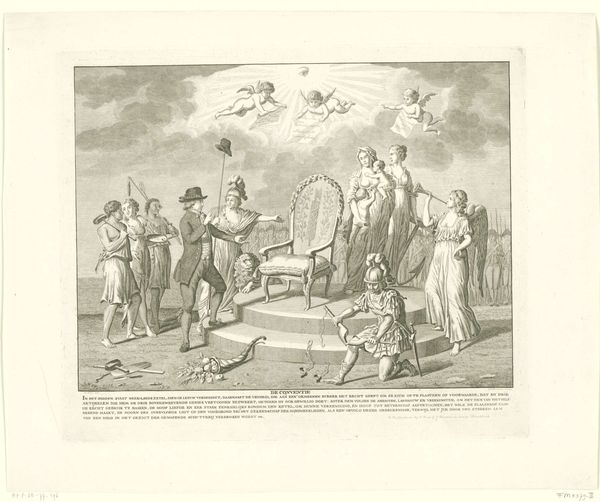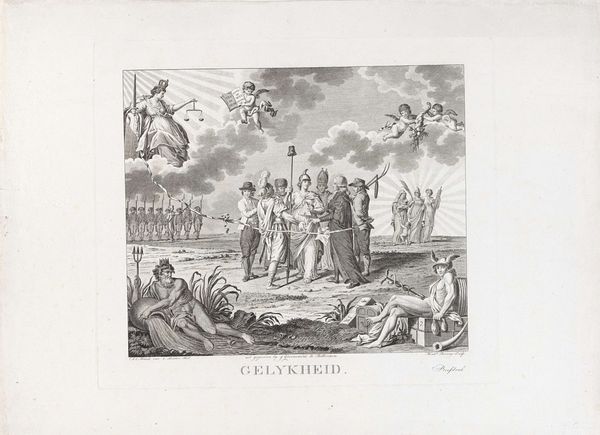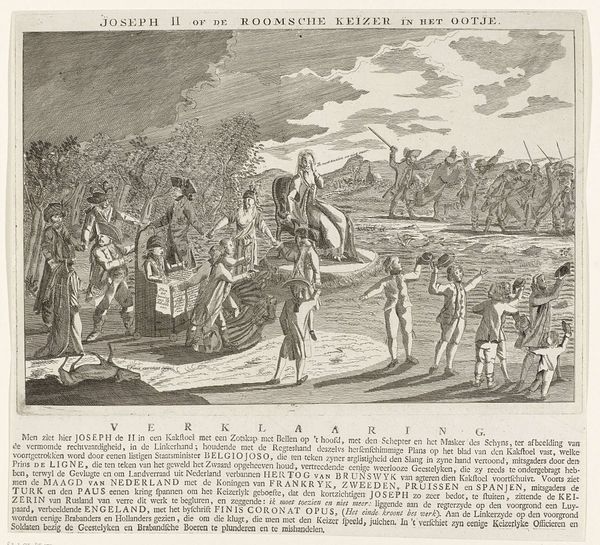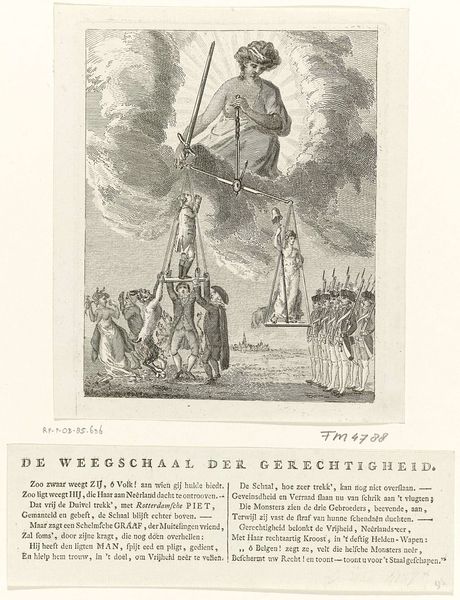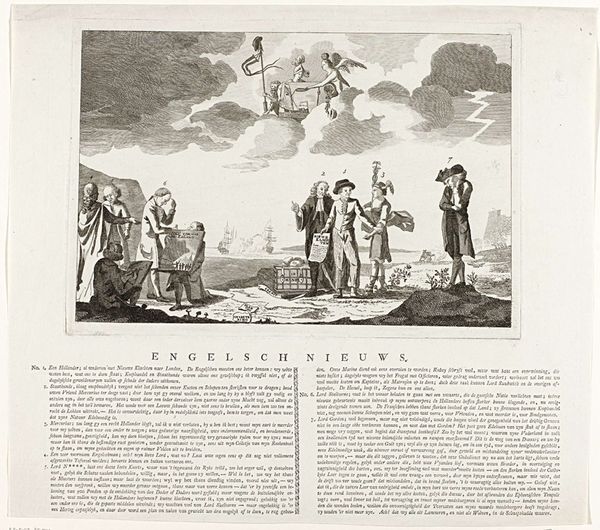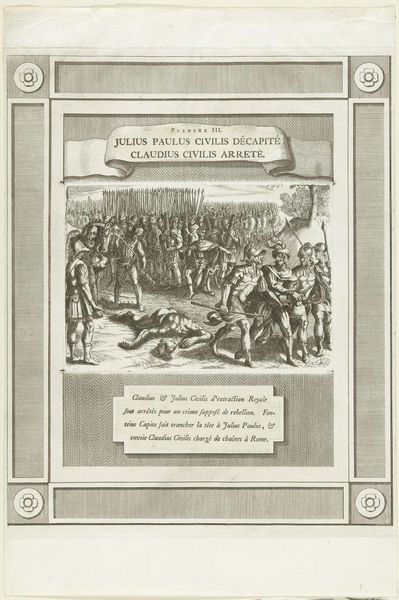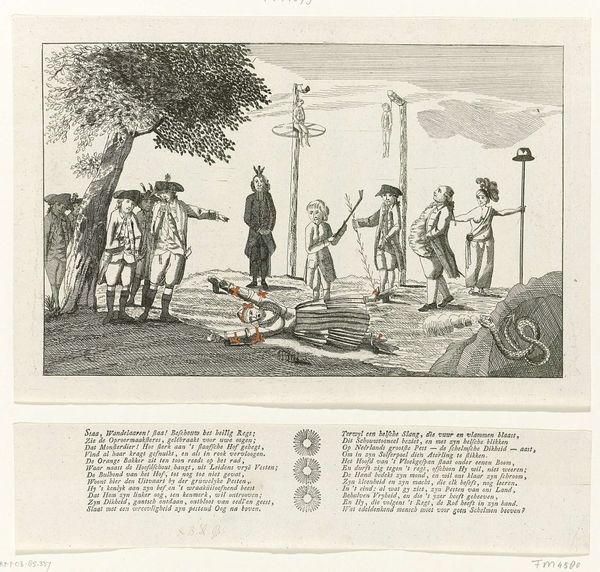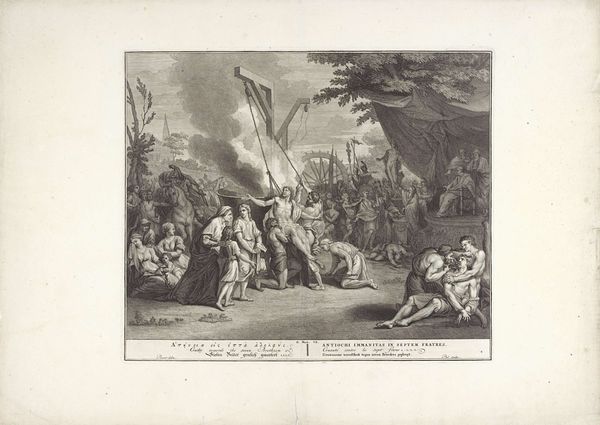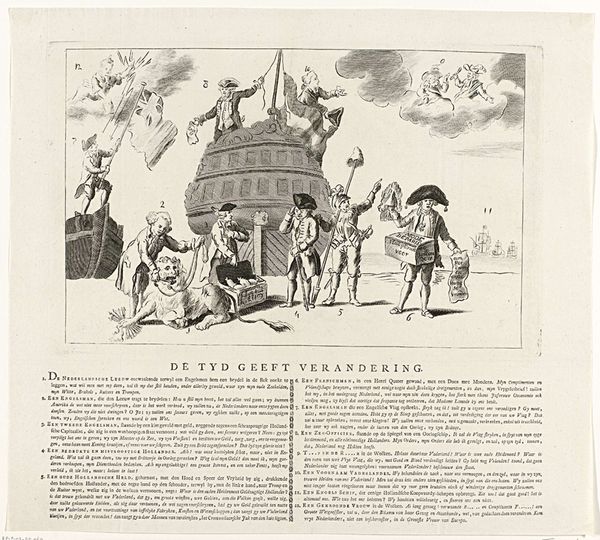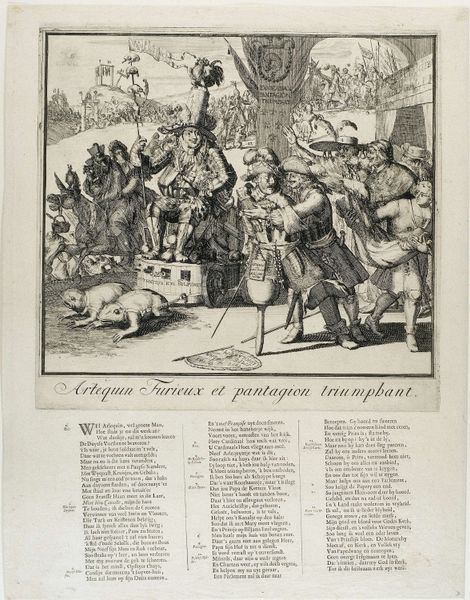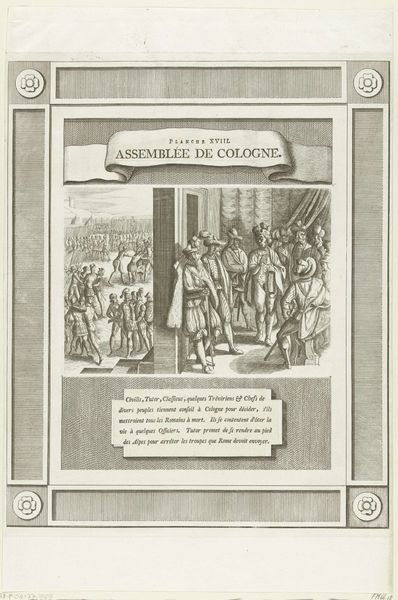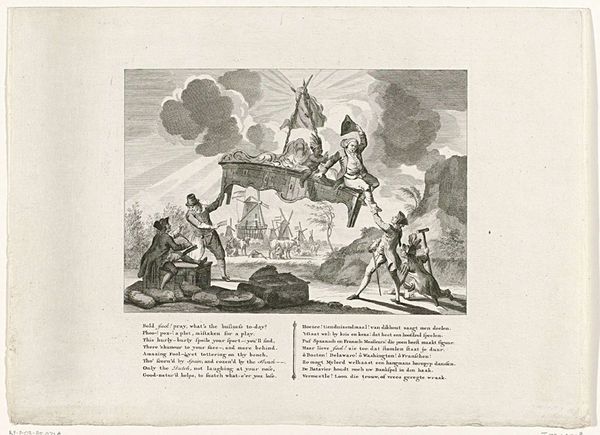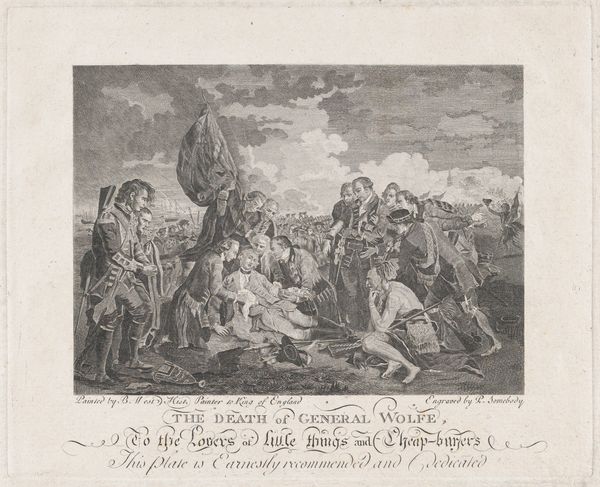
Spotprent op het vertrek van de hertog van Brunswijk uit Nederland, 1784 1784
0:00
0:00
print, engraving
#
neoclacissism
# print
#
caricature
#
traditional media
#
history-painting
#
engraving
Dimensions: height 285 mm, width 287 mm, height 173 mm, width 260 mm
Copyright: Rijks Museum: Open Domain
Curator: Let’s turn our attention to this print from 1784, titled "Spotprent op het vertrek van de hertog van Brunswijk uit Nederland," an anonymous work held at the Rijksmuseum. It captures the departure of the Duke of Brunswick from the Netherlands. What’s your initial take on this? Editor: It strikes me as a rather chaotic scene, dominated by strong diagonal lines formed by figures and even lightning bolts. The mood seems to teeter between celebratory and… vengeful? There’s definitely a feeling of expulsion at play. I am interested in what it's printed on; paper, obviously, but was this intended as something disposable? Curator: Exactly. This piece serves as a caricature deeply rooted in the political climate of the time. The Duke of Brunswick, heavily implicated in political turmoil, is being depicted as driven out. The print would have been widely circulated to influence public sentiment and reinforce political messaging. Note how the composition echoes neoclassicism even as it skewers the Duke. Editor: The details really highlight the 'how' of this propaganda. Look at the tools being cast aside. We see the "Degen, Pluim en Staf," – his sword, plume, and staff - stripped of their symbolic power, abandoned on the ground. These aren't just discarded items; they’re physical markers of lost authority. Consider, too, the printing process—etching and engraving allowing for multiples, extending its reach. Curator: Yes, and this piece goes further; the textual annotations amplify the visual critique, ensuring the political message is clear. It also alludes to a broader historical narrative concerning Dutch independence. The heavenly illustration above provides an interesting contrast. It signifies more than just political dissent, it hints at moral outrage too. Editor: To think about how it was consumed and how those at whom it aimed likely reacted, it allows me to appreciate the impact materiality had on disseminating political thought; an intriguing example of labor and intent intersecting in early mass media. Curator: Indeed, looking at it through both our lenses adds depth to understanding the cultural and political forces at play. It demonstrates art as a crucial site where social narratives were actively being shaped and negotiated. Editor: Absolutely; reflecting on both material production and political circumstance reveals how such pieces effectively helped shape narratives that resonated at that time.
Comments
No comments
Be the first to comment and join the conversation on the ultimate creative platform.
